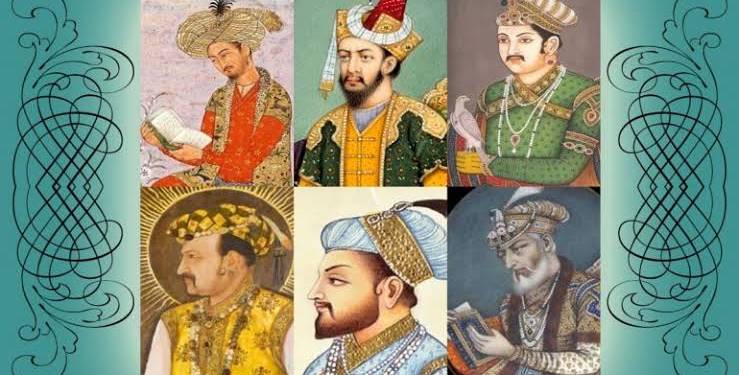Recently, AIMIM leader, Akbaruddin Owaisi triggered yet another controversy. Even as the firebrand leader argued against the NRC by flaunting eight centuries of so called Islamist rule over India.
He said, “There is no need to be afraid. Today, they are asking what does a Muslim have? I have this to say — you want to check my papers. For 800 years, I have ruled this country. This country belonged to me, belongs to me and will continue to be mine. My forefathers gave this country Charminar, Jama Masjid, Mecca Masjid, Qutub Minar. The Red Fort, on which the prime minister of this country hoists the tricolour, was also given to you by my forefathers. Do you want papers? Look, the Charminar is the biggest proof that my forefathers have made it (sic).”
The statement has obviously caused widespread outrage given the communal hatred that it has manifested. However, the remark is not only incendiary but also factually inaccurate and misleading.
In fact, a closer and precise analysis of India’s history would reveal that the Islamic rule in India was neither continuous nor did it stretch across the entire territory of India at any point of time.
While the 1857 Freedom Struggle was the first war of independence against the British rule, India witnessed a number of wars during what Owaisi describes as Islamic rule.
Dealing first with the Turkish (Mamluk) dynasty, it is worth noting that the Marxist historians believe that after the establishment of this dynasty, following Muhammad Ghori’s victory in the Battle of Tarain, India remained under the Mamluk dynasty rule, and later the Sayyid dynasty occupied India after Timur’s attack in 1398.
This version of history suggests that the Mamluk dynasty ruled India for a period of 206 years from 1192 to 1398. However, these make believe historians ignore the rise of the Musunuri Nayaks.
In his book, ‘The Delhi Sultanate – Muhammad Bin Tughluq’, RC Majumdar mentions the Musunuri Nayaks, while stating that there was a brewing national revolt against Sultan Tughluq, and capable forces at different places had come together for this purpose.
In fact, a closer analysis would reveal that the year 1336 had marked some significant developments against the Mamluk dynasty. Hammir Singh Sisodia inflicted a crushing defeat on Muhammad Bin Tughluq, and also restored the independence of the Rajputana.
At the same time, Harihara Raya and Bukka Raya also rose against Sultan Tughluq, and not only defeater him, but also established the famous Vijayanagara Empire.
If these historical facts are taken into consideration, it becomes clear that at the very best, the Turkish rule was only 144 years long. In 1336, the Mamluk dynasty had suffered a massive setback after the aforementioned events and it had got reduced to Delhi and its vicinity.
The Sayyid dynasty Sultans were called the rulers of Delhi, but their empire never extended to the whole of India. Even the Afghan rulers who came later were largely reduced to the Gangetic and Yamuna plains in Northern India. Before the advent of Mughal Rule, most of India remained independent of the Islamic rule.
Another myth that the leftist historians generally propagate is that the Mughal dynasty was the ruling dynasty in India before the advent of the Britishers. They also claim that the Mughals ruled India for 300 years uninterruptedly.
While it is true that the foundations of the Mughal rule were laid in the year 1526 after the Panipat battle and it is also true that during Akbar’s reign, the Mughal rule had extended to the whole of India, what cannot be denied is the fact that during, and after Aurangzeb’s reign, anti-Mughal sentiment had taken grip of several parts of India. The Mughal dynasty could never really recover after emergence of this sentiment.
Different rulers led the tirade against the Mughals in different parts of India. In the North, it was the tenth Sikh Guru, Guru Govind Singh who led the charge against the Mighal rule. In the West, it was Rana Raj Singh and Marwar’s Durgadas Rathore who took on the Mughal dynasty. Similarly, in the Eastern parts of India, Lachit Borphukan took on the Mughal rule, while it was Maratha warrior, Shivaji Bhosale I who went up in arms against the Mughal rule in Southern India.
Aurangzeb did not emerge victorious against any of these uprisings. After his death itself, the decline of the Mughal rule had set in and its ambitions of ruling entire India were left unfulfilled. Till the 1818 Anglo-Maratha war, India remained largely independent of the rule of Islamic invaders.
Considering the above aforesaid, it can be reasonably concluded that Mamluk dynasty had ruled India for 144 years, contrary to the popular perception. Even if the time period of Afghan dynasty is included, then the total historical duration goes upto 250 years. The Mughal dynasty too ruled India effectively only from 1526 to 1707. Therefore, the period of Islamic rule in India is 450 years, and not 800 years as is being claimed by the AIMIM leader.
As emphasised by Majumdar, if we leave two different periods of two decades, then none but two Islamic rulers were able to rule over the entire country. Some part of the country was always revolting against foreign rule.
However, the leftist historians have tried whitewashing all such revolts and uprisings. These revolts actually constitute the untold history of India.


































